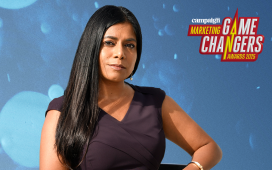
DEI – diversity, equity and inclusion – seems to be a topic of conversation everywhere right now, and for good reason. Some call it the key to creating better, more inclusive workplaces, while others argue it’s become a distraction, even blaming it for setbacks in everything from hiring to wildfires. Yes, you read that right.
Read more predictions for 2025 from industry leaders here.
Big companies such as Meta and Amazon have scaled back their DEI efforts, citing questions about effectiveness or shifting priorities. On the flip side, research keeps telling us that organisations with more diverse leadership aren’t just doing the right thing – they’re driving innovation, connecting with consumers and achieving measurable success. So, why is this topic so polarising, and what’s really at stake?
The biggest barrier to gender equity by far is paternity leave. Why, you ask? When companies focus solely on leave policies for mothers, it reinforces the outdated notion that caregiving is a woman’s responsibility. This imbalance pushes talented women to pause their careers or turn down leadership roles while men face little societal or workplace pressure to share caregiving duties. It’s not just inequitable – it’s bad for business.
Nordic countries have long recognised this issue and implemented policies to encourage fathers to take parental leave. In Sweden, parents are entitled to 480 days of parental leave between them, with 90 days reserved exclusively for each parent on a ‘use it or lose it’ basis. This approach has led to Swedish fathers taking about 29 per cent of the total parental leave days.
The impact is profound: women in Sweden have more freedom to focus on their careers or make decisions about family life without feeling forced to sacrifice one for the other. Timing is key – women often have children during the most critical years of their careers. With women delaying parenthood to prioritise their professional growth, could this be why birth rates are declining globally?
By sharing caregiving responsibilities more equitably, we can remove some of the systemic barriers to women’s career progress while incentivising families to have more children – a win for both society and the economy.
Now let’s talk numbers. There is mounting evidence that diverse leadership teams deliver significant advantages to the bottom line. According to McKinsey’s Diversity Wins report, companies in the top quartile for gender diversity on executive teams are 25 per cent more likely to achieve above-average profitability compared with those in the bottom quartile.
Similarly, research from the Peterson Institute for International Economics found that organisations with at least 30 per cent of leadership roles occupied by women could see a 15 per cent boost in net profit margins. For the fashion industry – grappling with sluggish growth, shifting consumer preferences and escalating cost pressures – these findings underscore a potent opportunity. By proactively recruiting women into executive positions and guaranteeing equitable processes throughout the talent pipeline, brands can unlock untapped innovation while bolstering their resilience.
Diversity doesn’t just make workplaces stronger – it also brings brands closer to their customers. In an increasingly globalised and interconnected world, consumer bases are more diverse than ever, and the most successful companies reflect that in their leadership. Studies have found that 62 per cent of Gen Z prefer to buy from sustainable brands with strong DEI commitments, and Deloitte reports that these younger generations actively seek workplaces that prioritise diversity and inclusion.
Diverse leadership teams are uniquely positioned to understand and connect with a broad range of audiences, ensuring that products, services and marketing campaigns resonate on a deeper level. When decision-makers bring varied perspectives to the table, brands can better anticipate consumer needs, avoid tone-deaf messaging and create products that genuinely reflect the values and preferences of their customers. In the fashion industry especially, where consumer identity and self-expression are core to the business, this ability to connect authentically with a wide audience is a critical driver of brand loyalty and success.
If we’re serious about closing the gender gap, we need to act faster. At the current pace, it will take a staggering 131 years to close the global gender gap – a timeline no forward-thinking business can afford to accept. The maths is clear: equity isn’t just good for people – it’s also good for business. The question is: will we rise to the challenge and drive the necessary change, or will we let this opportunity slip through our fingers? The choice is ours.
By Marilena Hadgianni, Director of Brand Marketing, Chalhoub Group









